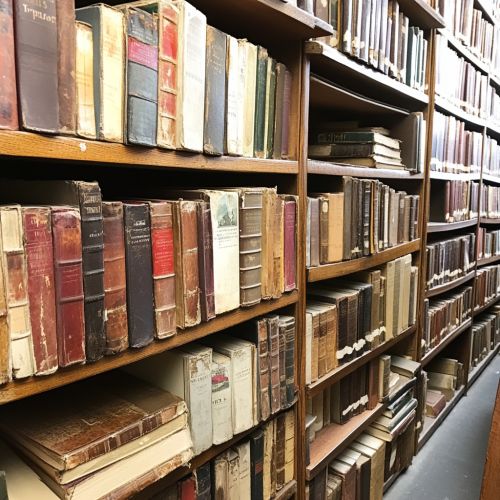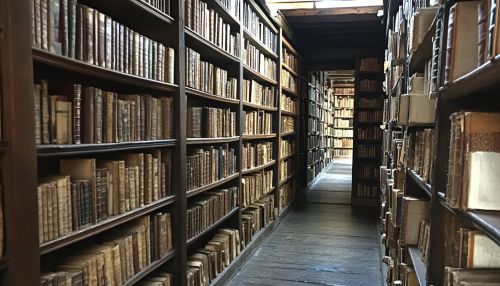Historical Novel: Difference between revisions
(Created page with "== Definition and Characteristics == A historical novel is a literary genre in which the plot takes place in a setting located in the past. These novels often incorporate real historical events or figures, but they also include fictional elements to enhance the narrative. The primary aim of a historical novel is to transport readers to a different time period, providing them with a deeper understanding of the historical context and the lives of the people who lived duri...") |
No edit summary |
||
| Line 63: | Line 63: | ||
The historical novel is a rich and diverse genre that offers readers a unique blend of history and fiction. By transporting readers to different time periods and providing a deeper understanding of historical events and figures, historical novels continue to captivate and educate audiences around the world. | The historical novel is a rich and diverse genre that offers readers a unique blend of history and fiction. By transporting readers to different time periods and providing a deeper understanding of historical events and figures, historical novels continue to captivate and educate audiences around the world. | ||
[[Image:Detail-97901.jpg|thumb|center|Bookshelves filled with historical novels in a library.|class=only_on_mobile]] | |||
[[Image:Detail-97902.jpg|thumb|center|Bookshelves filled with historical novels in a library.|class=only_on_desktop]] | |||
== See Also == | == See Also == | ||
Latest revision as of 14:19, 5 September 2024
Definition and Characteristics
A historical novel is a literary genre in which the plot takes place in a setting located in the past. These novels often incorporate real historical events or figures, but they also include fictional elements to enhance the narrative. The primary aim of a historical novel is to transport readers to a different time period, providing them with a deeper understanding of the historical context and the lives of the people who lived during that time.
Origins and Development
The historical novel as a genre began to take shape in the early 19th century, with Sir Walter Scott often credited as one of its pioneers. His novel "Waverley" (1814) is frequently cited as the first historical novel. Scott's works were characterized by their detailed depiction of historical settings and events, combined with fictional characters and plots. This blend of history and fiction set the standard for future historical novels.
The genre continued to evolve throughout the 19th century, with authors such as Alexandre Dumas, père, and Leo Tolstoy making significant contributions. Dumas's "The Three Musketeers" (1844) and Tolstoy's "War and Peace" (1869) are notable examples of historical novels that have had a lasting impact on literature.
Key Elements
Historical novels typically include several key elements:
- **Historical Accuracy:** While the narrative may be fictional, the historical context and events are often meticulously researched to ensure accuracy. This includes the portrayal of historical figures, social customs, and cultural practices.
- **Period Detail:** Authors of historical novels pay close attention to the details of the time period they are depicting. This includes clothing, architecture, language, and technology.
- **Authentic Dialogue:** The dialogue in historical novels is often crafted to reflect the speech patterns and vocabulary of the time period.
- **Historical Events:** Many historical novels incorporate real historical events into their plots, providing readers with a sense of the broader historical context.
- **Fictional Characters:** While historical novels often include real historical figures, they also feature fictional characters who interact with these figures and participate in historical events.
Subgenres
The historical novel genre encompasses a wide range of subgenres, each with its own unique characteristics:
- **Biographical Novels:** These novels focus on the life of a specific historical figure, blending historical facts with fictional elements to create a compelling narrative. Examples include Irving Stone's "The Agony and the Ecstasy" (1961), which depicts the life of Michelangelo.
- **Historical Romance:** This subgenre combines elements of romance with historical settings. Georgette Heyer's novels, such as "Regency Buck" (1935), are well-known examples.
- **Historical Mystery:** These novels blend historical settings with mystery and detective fiction. An example is "The Name of the Rose" (1980) by Umberto Eco, which is set in a 14th-century Italian monastery.
- **Historical Fantasy:** This subgenre incorporates fantastical elements into historical settings. An example is "Jonathan Strange & Mr Norrell" (2004) by Susanna Clarke, which combines magic with an early 19th-century setting.
Notable Authors and Works
Several authors have made significant contributions to the historical novel genre:
- **Sir Walter Scott:** Often considered the father of the historical novel, Scott's works include "Ivanhoe" (1820) and "Rob Roy" (1817).
- **Alexandre Dumas, père:** Known for his adventure-filled historical novels, Dumas's notable works include "The Count of Monte Cristo" (1844) and "The Three Musketeers" (1844).
- **Leo Tolstoy:** Tolstoy's "War and Peace" (1869) is a monumental work that depicts the Napoleonic Wars and their impact on Russian society.
- **Hilary Mantel:** Mantel's "Wolf Hall" (2009) and its sequels provide a detailed and nuanced portrayal of Thomas Cromwell and the court of Henry VIII.
- **Ken Follett:** Follett's "The Pillars of the Earth" (1989) is a historical novel set in 12th-century England, focusing on the construction of a cathedral.
Historical Novel Techniques
Authors of historical novels employ various techniques to create an immersive and authentic experience for readers:
- **Research:** Extensive research is crucial for historical novelists. This includes studying primary sources, such as letters, diaries, and official documents, as well as secondary sources, such as history books and scholarly articles.
- **World-Building:** Creating a believable and detailed historical world is essential. This involves describing the physical environment, social structures, and cultural practices of the time period.
- **Character Development:** Historical novelists often create complex and multi-dimensional characters who reflect the values and attitudes of their time.
- **Narrative Structure:** The narrative structure of historical novels can vary widely, from linear plots to more complex, multi-layered narratives. Some authors use multiple perspectives to provide a broader view of historical events.
Impact and Influence
The historical novel genre has had a significant impact on literature and popular culture. It has provided readers with a deeper understanding of history and has inspired interest in historical research and scholarship. Additionally, historical novels have often been adapted into films, television series, and stage productions, further extending their influence.
Criticism and Controversies
While historical novels are generally well-received, they are not without criticism and controversies. Some common criticisms include:
- **Historical Inaccuracy:** Critics argue that some historical novels take too many liberties with historical facts, leading to a distorted or misleading portrayal of history.
- **Anachronisms:** The inclusion of anachronistic elements, such as modern language or attitudes, can undermine the authenticity of a historical novel.
- **Romanticization:** Some historical novels are criticized for romanticizing or glamorizing historical events and figures, rather than providing a realistic depiction.
Conclusion
The historical novel is a rich and diverse genre that offers readers a unique blend of history and fiction. By transporting readers to different time periods and providing a deeper understanding of historical events and figures, historical novels continue to captivate and educate audiences around the world.


